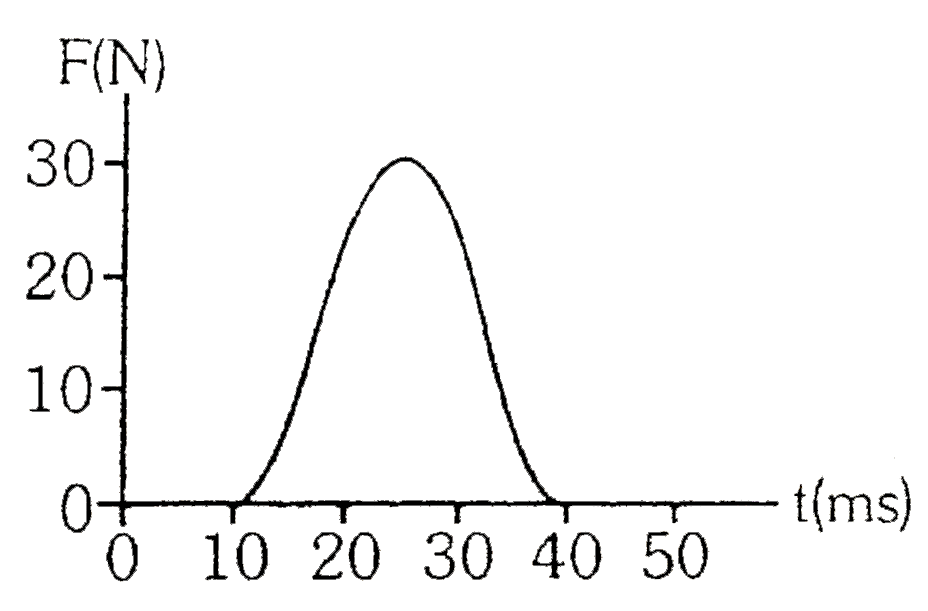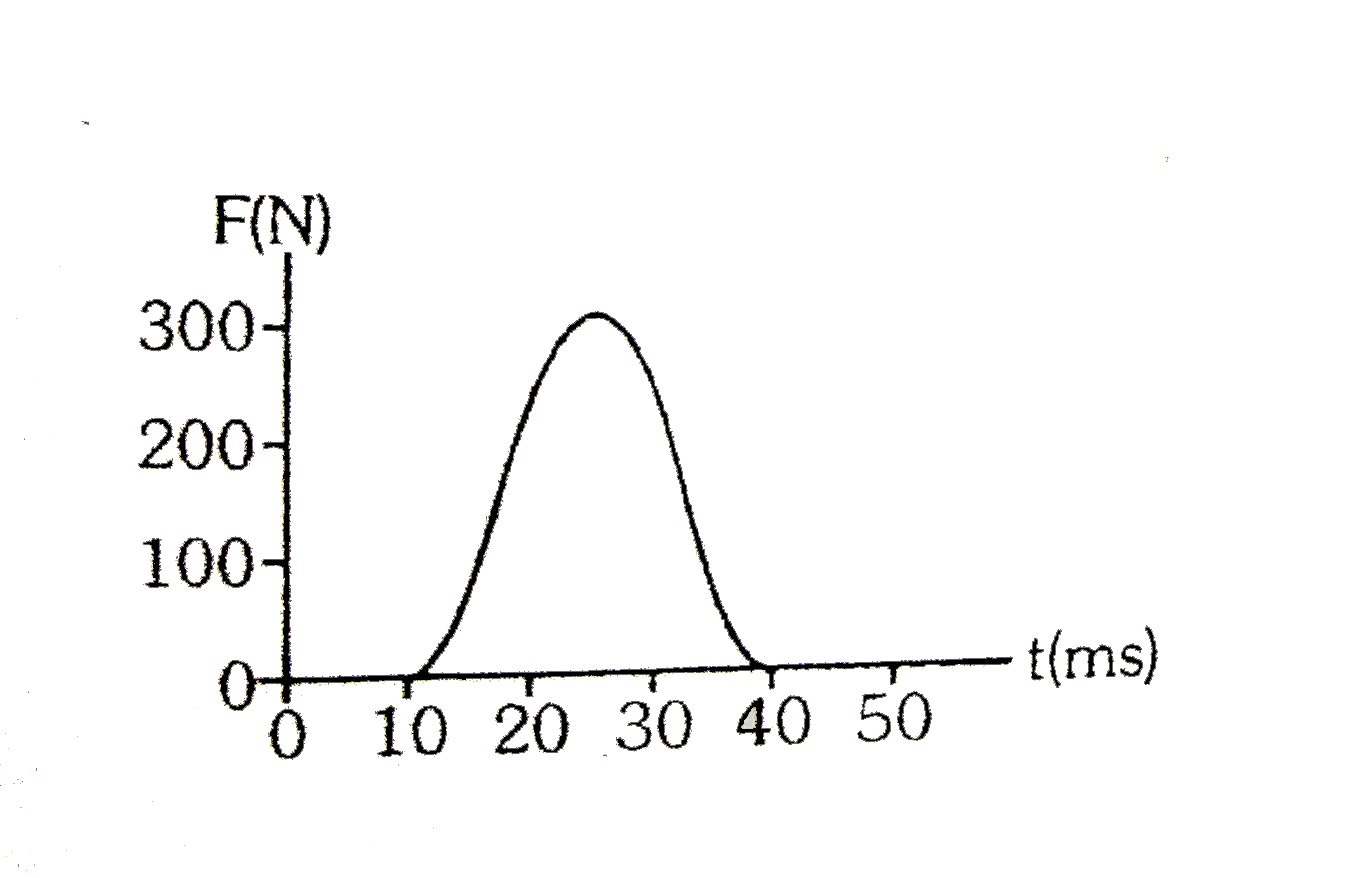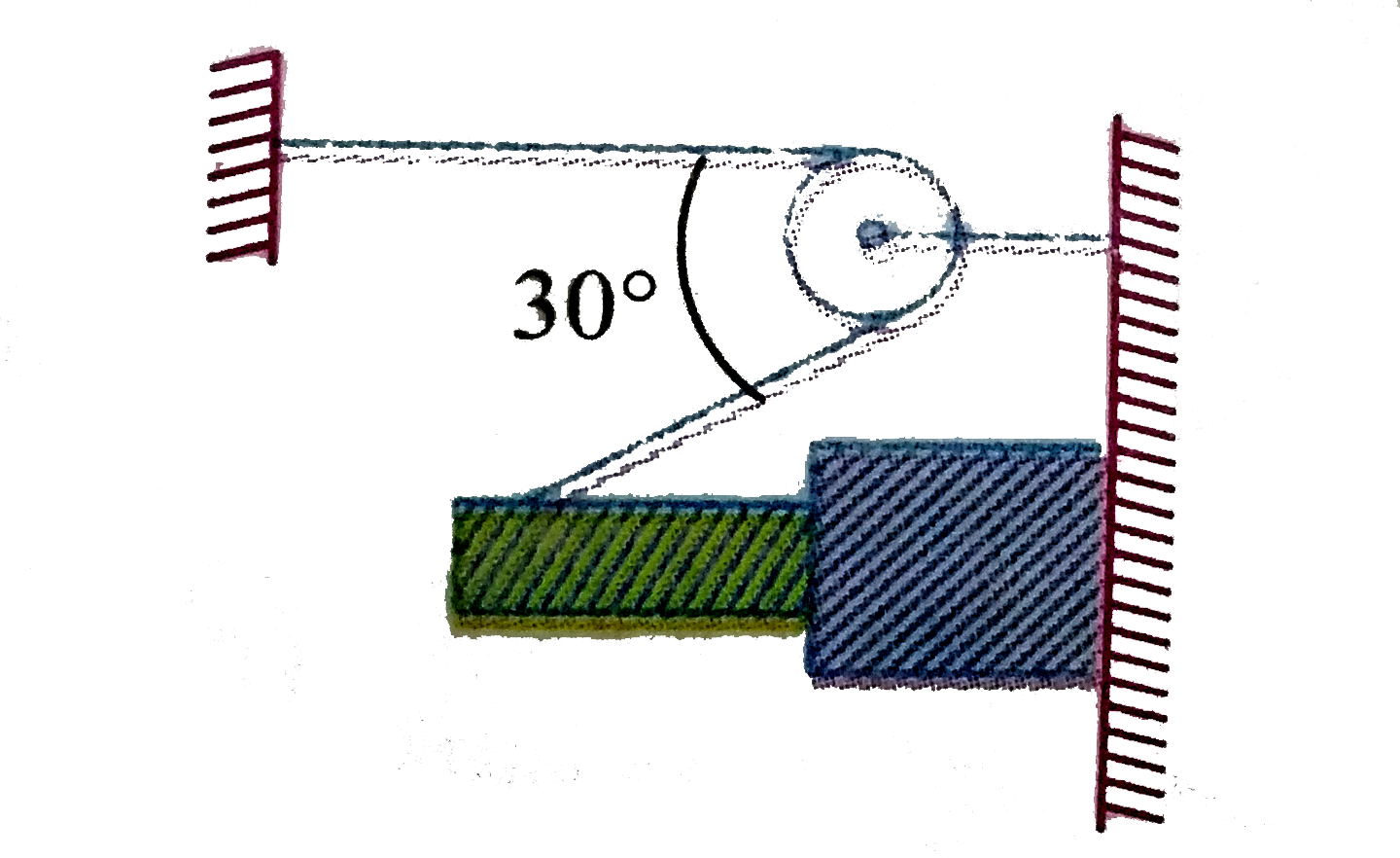Two blocks, with masses m12.5kg and m2=14kg, approach each other along a horizontal, frictionless track, The initial velocities of the blocks are v1=12.0m/s to the right an dv2=3.4m/s to the left. The two blocks then collide and stick together. Which of the graph could represent the force of block 1 on block 2 during the collision ?Solution in Gujrati




The correct Answer is:A
Step by step video & image solution for Two blocks, with masses m_(1) 2.5 kg and m_(2) = 14 kg, approach each other along a horizontal, frictionless track, The initial velocities of the blocks are v_(1) = 12.0 m//s to the right an dv_(2) = 3.4 m//s to the left. The two blocks then collide and stick together. Which of the graph could represent the force of block 1 on block 2 during the collision ? by Physics experts to help you in doubts & scoring excellent marks in Class 11 exams.
Updated on:21/07/2023Topper's Solved these Questions
- CENTRE OF MASSBOOK - ALLEN CHAPTER - CENTRE OF MASSEXERCISE - EXERCISE-II
43 Videos
- CENTRE OF MASSBOOK - ALLEN CHAPTER - CENTRE OF MASSEXERCISE - EXERCISE-III
41 Videos
- CENTRE OF MASSBOOK - ALLEN CHAPTER - CENTRE OF MASSEXERCISE - EXERCISE-V B
19 Videos
- BASIC MATHEMATICS USED IN PHYSICS &VECTORS BOOK - ALLEN CHAPTER - BASIC MATHEMATICS USED IN PHYSICS &VECTORS EXERCISE - EXERCISE-IV ASSERTION & REASON
11 Videos
- ELASTICITY, SURFACE TENSION AND FLUID MECHANICSBOOK - ALLEN CHAPTER - ELASTICITY, SURFACE TENSION AND FLUID MECHANICSEXERCISE - Exercise 5 B (Integer Type Questions)
3 Videos
Similar Questions
Two particle A and B start moving due to their mutual interaction only. If at any tiem 't', →aA and →aB are their respective accelerations, →vA and →vB are their respective velocities, and upto that time WA and WB are the work done on A and B respectively by the mutual force, mA and mB are their masses respectively, then which of the following is alwys correct.
View SolutionA particle of mass m, kinetic energy K and momentum p collision head on elastically with another particle of mass 2m at rest. After collision. :
Column IColumn II(A)Momentum of first particle(p)3/4p(B)Momentum of second particle(q)−K/9(C)Kinetic energy of first particle(r)−p/3(D)Kinetic energy of second particle(s)8K9None
View SolutionTwo particles of masses m1 and m2 in projectile motion have velocities →v1 and →v2 , respectively , at time t=0. They collide at time t0. Their velocities become →v'1 and →v'2 at time 2t0 while still moving in air. The value of ∣∣∣(m1→v'1+m2→v'2)−(m1→v1+m2→v2)∣∣∣
View SolutionAssertion: If the initial and final positions coincide, the displacement is a null vector.
Reason: A physical quantity can not be called a vector, if its magnitude is zero.
View SolutionTwo soap bubbles A and B are kept in a closed chamber where the air is maintained at pressure 8N/m2.The radii of bubbles A and B are 2cm and 4cm, respectively. Surface tension of the soap-water used to make bubbles is 0.04N/m. Find tha ratio nB/nA, where nA and nB are the number of moles of air in bubbles A and B, respectively. [Neglect the effect of gravity.]
View SolutionTwo blocks of masses m_(1) = 2 kg and m_(2) = 5 kg are moving in the same direction along a frictionless surface with speeds 10 m//s and 3 m//s , respectively, m_(2) being ahead of m_(1) . An ideal spring with k = 1120 N//m is attached to the back side of m_(2) . Find the maximum compression of the spring when the blocks collide. What are the final velocities of the blocks when they separate?
View SolutionTwo identical 5 kg blocks are moving with same speed of 2 m//s towards each other along a frictionless horizontal surface . The two blocks collide , stick together and come to rest. Consider the two blocks as a system . The work done by the external and ijnternal force are respectively:
View SolutionTwo blocks with masses M1 and M2 of 10kg and 20kg respectively are placed as in fig. μs=0.2 between all surfaces, then tension in string and acceleration of M2 block will be:

View SolutionTwo blocks, with masses m_(1) 2.5 kg and m_(2) = 14 kg , approach each other along a horizontal, frictionless track, The initial velocities of the blocks are v_(1) = 12.0 m//s to the right an d v_(2) = 3.4 m//s to the left. The two blocks then collide and stick together. Which of the graph could represent the force of block 1 on block 2 during the collision ?
View SolutionTwo blocks of masses m_(1) and m_(2) are kept on a smooth horizontal table as shown in figure. Block of mass m_(1) (but not m_(2) is fastened to the spring. If now both the blocks are pushed to the left so that the spring is compressed a distance d. The amplitude of oscillatin of block of mass m_(1) after the system is released is
View SolutionTwo blocks of masses m_(1) =1kg and m_(2) = 2kg are connected by a spring of spring constant k = 24 N/m and placed on a frictionless horizontal surface. The block m_(1) is imparted an initial velocity v_(0) = 12cm/s to the right. The amplitude of osciallation is
View SolutionTwo blocks of masses 2 kg and 1 kg are in contact with each other on a frictionless table. When a horizontal force of 3.0 N is applied to the block of mass 2 kg the value of the force of contact between the two blocks is:
View SolutionTwo equal masses m_(1) = m_(2) = 1 kg are kept on an inclined plane with an initial separation of 0.4 m. The coefficients of friction mu_(1) and mu_(2) for the blocks m_(1) and m_(2) with ground are 0.1 and 0.2 respectively. If the collision between the two blocks is completely inelastic.
View SolutionTwo blocks of mass m1andm2 lie on smooth horizontal table in contact with each other as shown in figure

If a force F is applied to the mass m1 then the contact force between the block will be
View SolutionFigure shows three identical blocks 1,2 & 3 each of mass m kept on frictionless surface. Block 1 is given initial velocity v0 in the direction shown. Block 1 hits block 2 and stops

View Solutionचाल 5 मी/से से गतिमान द्रव्यमान 10 किग्रा का एक गुटका विरामावस्था में रखे द्रव्यमान 20 किग्रा के एक दूसरे गुटके से टकराता है तथा चाल 2 मी/से से वापस लौट आता है | टक्कर के उपरांत दूसरे गुटके का वेग क्या होगा ?
View Solution
